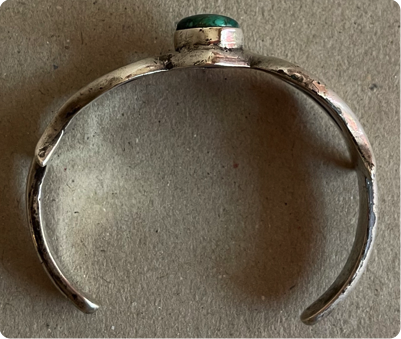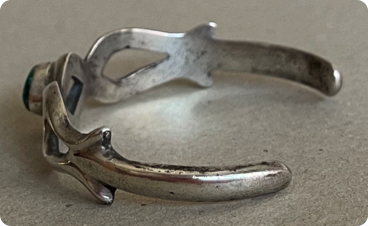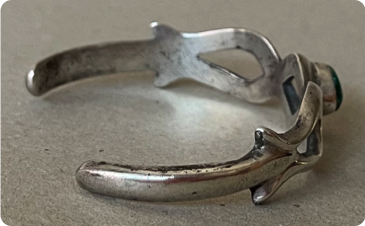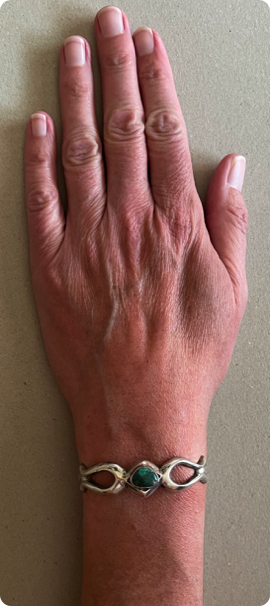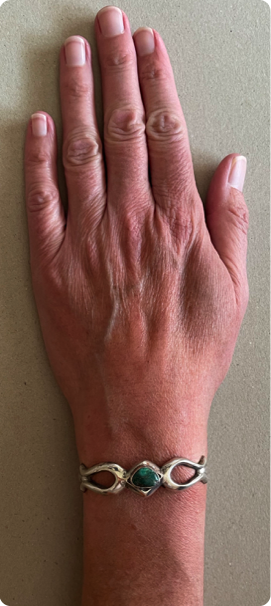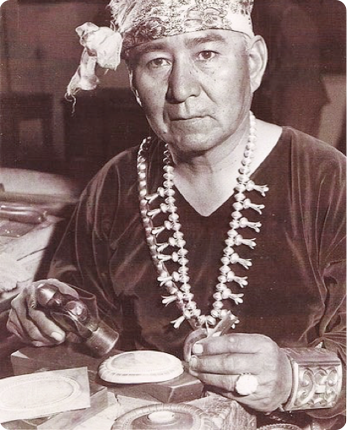
© 2010-2024 by Fine Arts of the Southwest, Inc. All rights reserved.
Unauthorized reproduction or use is strictly prohibited by law.
A very finely-crafted historic Navajo tufa-cast silver and turquoise bracelet by Ambrose Roanhorse, c.1930’s-50’s
This sweet little jewel of a bracelet was made by the Internationally renowned Navajo silversmith and educator Ambrose Roanhorse (1904-1982). It has a modernistic, yet classic design sensibility which is completely consistent with the beautiful refined appearance and extremely high technical level of achievement we have always associated with Roanhorse’s exceptional silverwork.
These capabilities and Roanhorse’s ability to teach them as an educator and communicate and inspire them as an administrator are the reasons why he remains the only Navajo silversmith to have ever received the honorific title of “Beshlakai Nataani” or “Leading silversmith of the Navajo Nation”, a prestigious title bestowed upon him by the Navajo Tribal authority. In 1954, the French Government also officially recognized Roanhorse’s superior achievements by awarding him their prestigious “Palmes Academique” award.
“It sure feel good when you wear hand-made jewelry. If they use machine jewelry, by golly, one these days 20 years from now goin’ to have big sandstorms-10 years,
8 years, maybe 5 years. That’s the way I feel.”
-Ambrose Roanhorse, 1936
Quotation from Billie Hougart, “The Little Book of Marks on Southwestern Silver”, TBR International, 2011
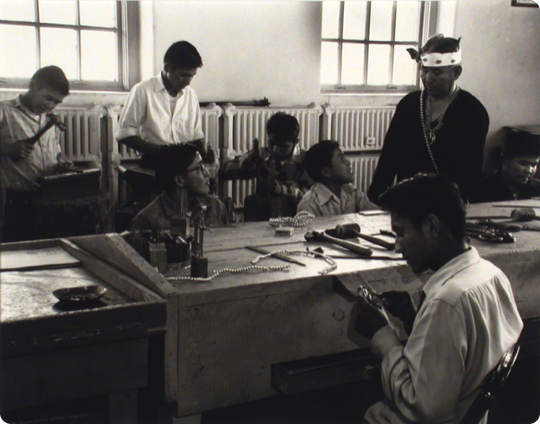
The bracelet measures 5/8" in width at its widest center point and tapers down to 3/16" in width at the terminal ends. The inner circumference end-to-end is 4 3/4" and the gap between the terminals is 1 1/4" for a total interior circumference of 6”. The bracelet weighs a very comfortable and easy to wear 20 grams or 3/4 of an ounce.
The bracelet is properly signed with Ambrose Roanhorse’s customary hallmark of a capital letter “A” inside an arrowhead with a broken tip or a keystone and it is in completely excellent original vintage condition with a fine soft patina from age and use.
There is a revisionist theory recently making the rounds in some of the antique Native American art world
which speculates that this signature is not actually that of Ambrose Roanhorse, but that of another lesser
known Navajo silversmith named Ambrose Lincoln. We disagree with this theory for a number of reasons, the most important of which is the similarity, consistency and quality of the artistic and technical work in the numerous pieces we have seen and handled over the decades marked with this “A” inside a keystone signature. This exceptional regularity of style and appearance and constant high quality is completely consistent with the long, distinguished and well-documented career of Ambrose Roanhorse, not the virtually unknown career of another Navajo silversmith who just happened to have the same first name. Just our 35-plus year experienced and educated opinions talking here, but by all means anyone can feel free to disagree.
This bracelet is a beautifully-crafted and historic piece of traditional Navajo silverwork created by a world-renowned historic Navajo silversmith and it would be a joy to own and wear or to simply display as
the outstanding piece of art, culture and tradition it is.
Price $1,150
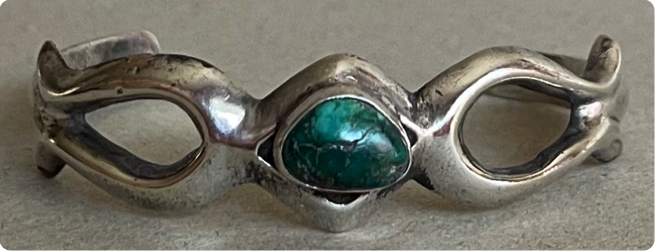
This bracelet is so effortlessly graceful and lovely that the casual observer might never guess how painstakingly difficult the process of making such a piece really was. Of all traditional Navajo silversmithing techniques, tufa-casting is probably the most nerve-wracking, uncertain and difficult process to achieve properly. The red-hot molten silver has to be at the precise right temperature to flow smoothly and evenly into the mold, the mold must not crack or break under the extreme temperature and if all goes well which it often does not the happy result is
a clean even cast like this one.
The bracelet displays the ideal tufa-cast qualities of strength and a certain delicacy simultaneously.
The beautiful deep greenish-blue turquoise stone in the center of the bracelet is possibly from the ancient Cerrillos turquoise mine outside Santa Fe and is nicely set in an old-style plain “fold-over” type silver bezel. Under a magnifying glass, one can see a small amount of matrix-related cracking and pitting in the stone, but it appears to be completely secure and intact.
The bracelet is definitely on the smaller side, possibly made for a child or a smaller woman. Child’s bracelets and other jewelry were taken just as seriously as pieces made for adults in traditional Navajo culture where children commonly wore and still do wear jewelry regularly as a proud display of family wealth, status and success.
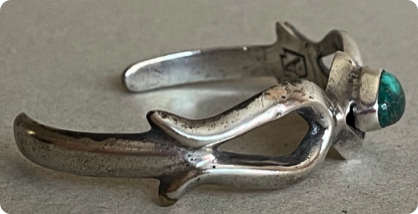
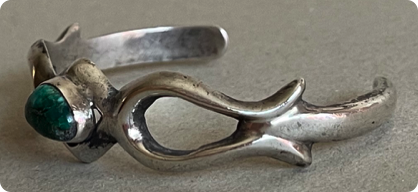
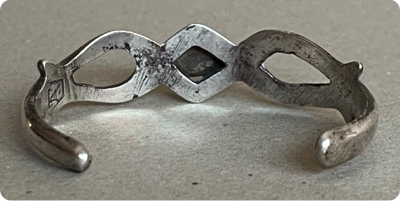
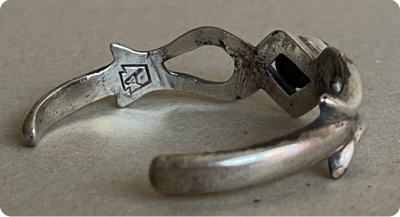
Ambrose Roanhorse working at his bench, c. 1950
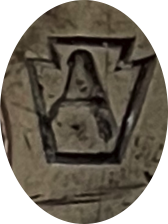
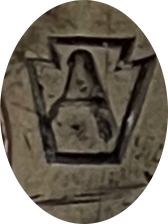
Ambrose Roanhorse teaching a silversmithing class at
The Fort Wingate Indian School in New Mexico, 1950.
Laura Gilpin Photograph. Copyright: © 1979 Amon Carter Museum of American Art
